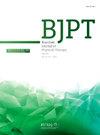The most effective therapeutic exercises for pain intensity in women with fibromyalgia: A systematic review and network meta-analysis
IF 3.2
3区 医学
Q1 ORTHOPEDICS
引用次数: 0
Abstract
Background
Therapeutic exercise (TE) is the only intervention with strong recommendation for fibromyalgia. However, there is controversy as to which type of exercise is the most beneficial.
Objective
To determine which TE approach is the most effective in reducing pain intensity in women with fibromyalgia.
Methods
A systematic review was performed with a network meta-analysis (NMA). Six databases were searched from inception until January 2024. Randomized controlled trials (RCTs) evaluating the effects of TE on pain intensity were included in women with fibromyalgia. Methodological quality was assessed using the Physiotherapy Evidence Database scale. The size of the effect and the clinically important difference were determined in the short-term (≤3 months) and long-term (>3 months).
Results
Sixty-one studies were identified, of which 51 were included in the quantitative synthesis (n = 2873). Fifteen TE interventions and eight comparison interventions (comparators) were identified. Aquatic exercise (p-score: 0.8713) was found to provide best benefits in the short-term and resistance training in the long-term (p-score: 0.9749). Statistically significant differences were found in favor of aquatic exercise, Pilates, qigong, resistance training, virtual reality, mixed exercise, and aerobic exercise (in the short-term) and in favor of resistance training, dance, functional training, aquatic exercise, virtual reality, and aerobic exercise (in the long-term) compared to usual care.
Conclusion
With a moderate level of evidence, our NMA shows that, in the short-term, aquatic exercise is the most effective TE intervention to reduce pain intensity in women with fibromyalgia, while resistance training is the most effective in the long-term. More RCTs are needed to strengthen these findings.
对纤维肌痛女性疼痛强度最有效的治疗运动:一项系统综述和网络荟萃分析
背景:治疗性运动(TE)是唯一强烈推荐用于纤维肌痛的干预方法。然而,对于哪种类型的运动最有益,存在争议。目的确定哪种TE入路对减轻纤维肌痛患者疼痛强度最有效。方法采用网络meta分析(NMA)进行系统评价。从成立到2024年1月,对六个数据库进行了搜索。随机对照试验(rct)评估TE对纤维肌痛女性疼痛强度的影响。采用物理治疗证据数据库量表评估方法学质量。在短期(≤3个月)和长期(≤3个月)分别测定疗效大小和临床重要差异。结果共纳入61项研究,其中51项纳入定量合成(n = 2873)。确定了15个TE干预措施和8个比较干预措施(比较者)。水上运动短期效果最佳(p值:0.8713),长期效果最佳(p值:0.9749)。与常规护理相比,在支持水上运动、普拉提、气功、阻力训练、虚拟现实、混合运动和有氧运动(短期)和支持阻力训练、舞蹈、功能训练、水上运动、虚拟现实和有氧运动(长期)方面存在统计学显著差异。结论在中等水平的证据下,我们的NMA显示,在短期内,水上运动是减轻纤维肌痛女性疼痛强度的最有效的TE干预,而阻力训练是最有效的长期干预。需要更多的随机对照试验来加强这些发现。
本文章由计算机程序翻译,如有差异,请以英文原文为准。
求助全文
约1分钟内获得全文
求助全文
来源期刊
CiteScore
6.10
自引率
8.80%
发文量
53
审稿时长
74 days
期刊介绍:
The Brazilian Journal of Physical Therapy (BJPT) is the official publication of the Brazilian Society of Physical Therapy Research and Graduate Studies (ABRAPG-Ft). It publishes original research articles on topics related to the areas of physical therapy and rehabilitation sciences, including clinical, basic or applied studies on the assessment, prevention, and treatment of movement disorders.

 求助内容:
求助内容: 应助结果提醒方式:
应助结果提醒方式:


